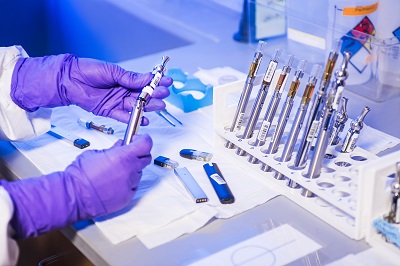What conditions must be met to apply for Class II in vitro diagnostic medical device MDL registration?
Release time:2024-10-30 10:36:28
The author:
source:
The device must be classified as a Class II IVD according to Health Canada’s classification criteria. This classification typically applies to moderate-risk devices that require a higher level of scrutiny than Class I devices but less than Class III and IV devices.
To apply for a Class II in vitro diagnostic (IVD) medical device Medical Device License (MDL) registration in Canada, certain conditions must be met. These conditions ensure that the device complies with Health Canada's regulatory framework for safety, quality, and effectiveness. Here’s a breakdown of the key conditions:
1. Device Classification
- The device must be classified as a Class II IVD according to Health Canada’s classification criteria. This classification typically applies to moderate-risk devices that require a higher level of scrutiny than Class I devices but less than Class III and IV devices.
2. Quality Management System (QMS) Compliance
- The manufacturer must have a compliant Quality Management System (QMS) in place, specifically:
- ISO 13485 Certification: The manufacturer must be certified to ISO 13485, which specifies requirements for a quality management system that demonstrates the ability to provide medical devices that consistently meet customer and regulatory requirements.
- MDSAP Certification: Participation in the Medical Device Single Audit Program (MDSAP) is required. MDSAP allows for a single audit to satisfy the requirements of multiple regulatory jurisdictions, including Canada.
3. Safety and Effectiveness Evidence
- The applicant must provide sufficient evidence demonstrating the safety and effectiveness of the device. This includes:
- Performance data from analytical and clinical studies showing the device’s intended use, accuracy, sensitivity, and specificity.
- A risk assessment that complies with ISO 14971 standards, detailing any potential risks associated with the device and the mitigations in place.
4. Labeling and Instructions for Use (IFU)
- The device must have appropriate labeling that meets Health Canada’s requirements, which includes:
- A clear description of the device and its intended use.
- Warnings, contraindications, and any necessary precautions.
- Bilingual labeling (English and French) as per Canadian regulations.
- Detailed Instructions for Use (IFU) that guide the user on how to properly use and handle the device.
5. Application Documentation
- The applicant must prepare and submit the required documentation, which includes:
- Completed Form 3011 (MDL Application).
- Supporting documents such as performance testing results, QMS certification, device specifications, and safety summaries.
- All documents must be thorough, accurate, and professionally presented to facilitate review by Health Canada.
6. Payment of Application Fees
- The applicant must pay the required application fee, which typically ranges from CAD $5,000 to CAD $6,000 for Class II devices. Small businesses may qualify for a fee reduction.
7. Compliance with Canadian Medical Devices Regulations
- The device and the application must comply with the Canadian Medical Devices Regulations (SOR/98-282), which outline the regulatory requirements for medical devices in Canada.

Contact Us:
Whatsapp or Wechat:+86 15816864648;email address:hito.lin@grzan.cn
.png)
.jpg)
.png)

.png)